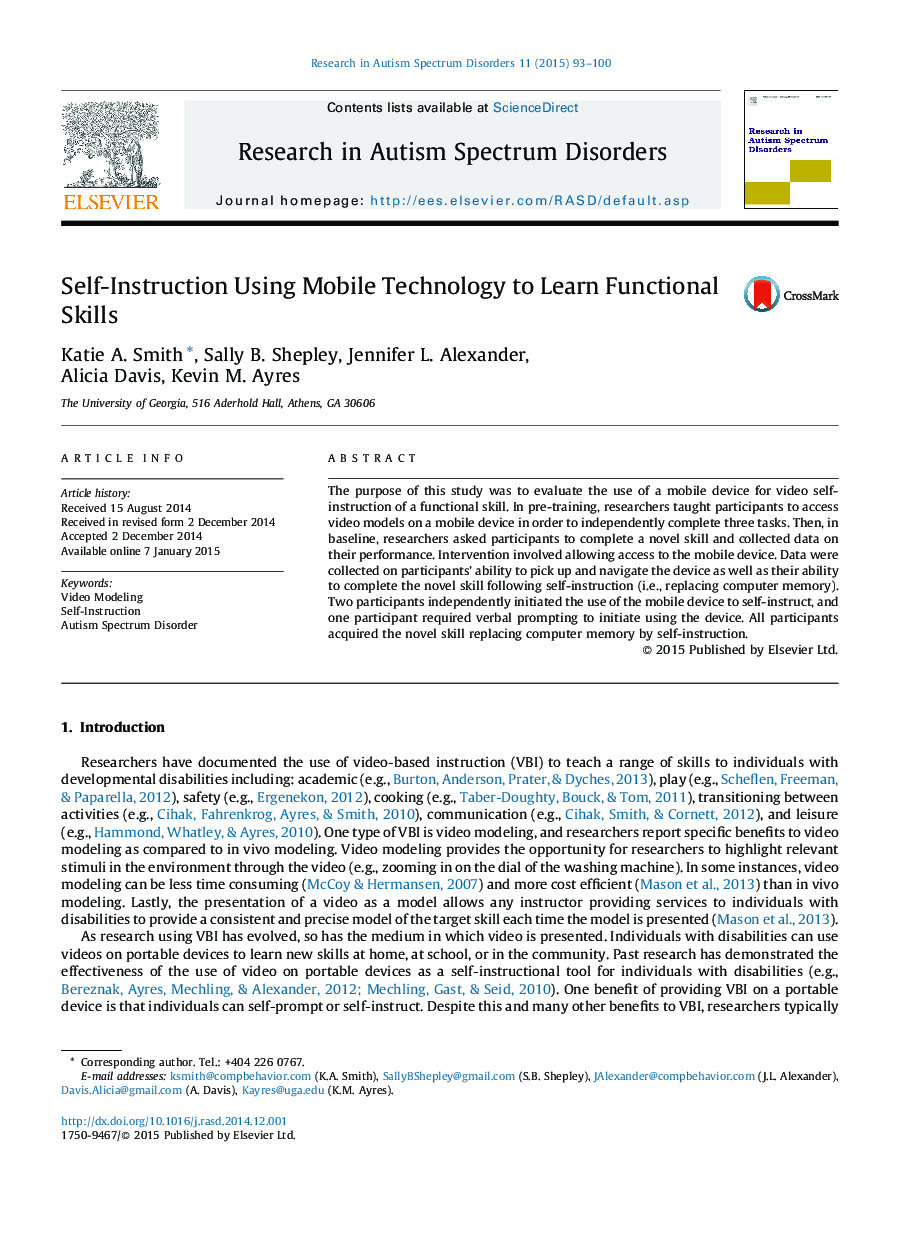| Article ID | Journal | Published Year | Pages | File Type |
|---|---|---|---|---|
| 370008 | Research in Autism Spectrum Disorders | 2015 | 8 Pages |
•The purpose of the study was to evaluate the use of the device as a self-instructional tool for acquisition of a novel skill in the absence of specific prompts to use the device with high school students with autism.•There were individual differences between participants in terms of who self-instructed independently and who did not.•Additional research needs to be done to assess and train for generalization of self-instructional skills for a variety of tasks, but in order to make video modeling most efficient, research needs to continue to move in the direction of self-instruction.
The purpose of this study was to evaluate the use of a mobile device for video self-instruction of a functional skill. In pre-training, researchers taught participants to access video models on a mobile device in order to independently complete three tasks. Then, in baseline, researchers asked participants to complete a novel skill and collected data on their performance. Intervention involved allowing access to the mobile device. Data were collected on participants’ ability to pick up and navigate the device as well as their ability to complete the novel skill following self-instruction (i.e., replacing computer memory). Two participants independently initiated the use of the mobile device to self-instruct, and one participant required verbal prompting to initiate using the device. All participants acquired the novel skill replacing computer memory by self-instruction.
